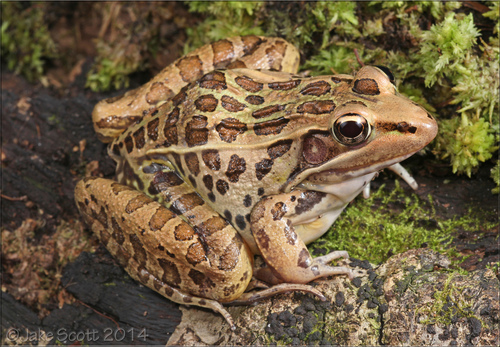
Southern Leopard Frog
The Southern Leopard Frog boasts a slender body with striking leopard-like spots, thriving in wetland habitats. Its agile jumps and crucial role in controlling insect populations highlight its ecological significance, while its vibrant presence lends a dynamic beauty to its marshy environment.
6 years
Lifespan
Least Concern
Conservation Status
Stable
Population Trend
Distribution Range of the Southern Leopard Frog
Lithobates sphenocephalus, commonly known as the Southern Leopard Frog, is native to the southeastern United States. Its geographical distribution extends from the eastern coast, from Delaware to Florida, and westward to Texas, Oklahoma, and Missouri. There are also populations found in parts of the Midwest.
Southern Leopard Frog's Habitat
Environmental Conditions
The Southern Leopard Frog typically inhabits a variety of freshwater environments. This includes wetlands, ponds, lakes, and slow-moving rivers with plenty of vegetation. The species thrives in areas with mild to warm temperatures and high humidity, often found near permanent water bodies.
Ecological Niche
As a semi-aquatic amphibian, Lithobates sphenocephalus plays a vital role in its ecosystem. It typically engages in diurnal activity but can be nocturnal depending on temperature conditions. It feeds on a wide range of invertebrates and small animals, making it an important predator in controlling insect populations. The species provides prey for larger predators such as birds, snakes, and mammals, thus maintaining the ecological balance in its native habitat.
Copyright @ Nature Style Limited. All Rights Reserved.
 English
English